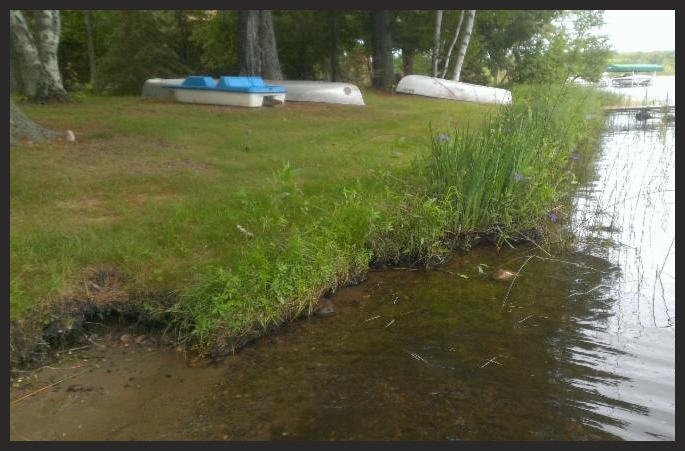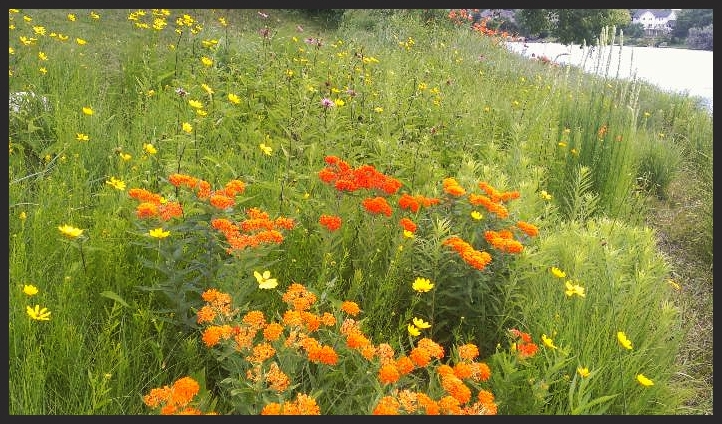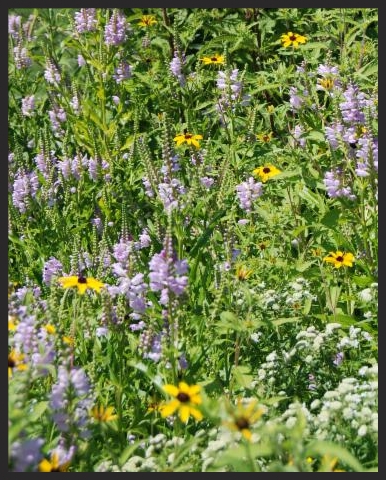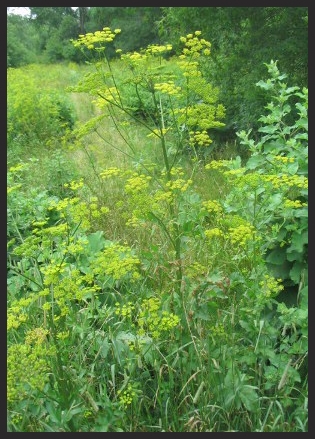|
July Article
|
Flood Effects
With the near record rainfall that we experienced in June, creeks and rivers are filling their floodplains, wetlands look more like lakes, and our lakes have their shorelines under water. The Twin Cities received over 11 inches of rain in June alone, making it the second wettest in history. So how do wetland and shoreline restorations respond to this natural disturbance? What can we expect in the near-term and into next year?

If we look at the big picture, native plants are very tough and can withstand fire and floods. On the flip side, ornamental plants and turf grasses like a pretty narrow range of environmental conditions. If turf remains under water for more than a few days it will start to die. We are now seeing this effect of high water around many metro area lakeshores. Native wetland and shoreline plant species have evolved to put up with flooding. Many of our shoreline projects have remained under water for more than a week, and when the water slowly recedes, the plants quickly bounce back and flourish. Besides looking amazing and providing essential wildlife habitat, natural shores are very resilient to flooding. This has become strikingly obvious this year.

In addition to stress on shoreline plants, high water tends to bring erosion and weeds. Dead turf caused by flooding will "open up" the soils which are then highly susceptible to wave action. It is very important to inspect your shoreline and look for early signs of erosion. High water can also transport weed seed. Noxious, invasive species like reed canary grass and Canada thistle float on the water surface and can be deposited in areas that were traditionally free of weeds. Next spring, we will be on the lookout for new weed infestations on our projects that were flooded this year.

On the positive side, all of this rain has resulted in incredible growth and amazing blooms on our Minnesota native plant species. Between the raindrops, please venture out and enjoy the gorgeous colors this season! Are you thinking of replacing dead turf areas this summer? Please visit our retail nursery website for hours and plant lists. Have questions about maintenance or erosion problems? Contact us for site assessments!

|
|
Native Plant of the Month
|

Obedient Plant
Physostegia virginiana
Moisture: Wet or Moist
Exposure: Full or Partial Sun
Bloom: July- September
Color: Pink
Height: 2-4 ft.
Description: Easy to grow, square-stemmed plant spreading by rhizomes. Stems stiff, smooth, and hairless. Terminal spikes of densely packed, rosy-pink, 2-lipped tubular flowers. Grows best in full sun and part sun, in moist to wet soils. Likes water-saturated conditions. Found in streambanks, low prairies, sedge meadows, and moist open woods. Flowers visited by hummingbirds, butterflies, and bees. Pollination by bees. A late season bloomer with a long blooming period. Known as obedient plant because the flower can be rotated on flower stalk and stay put in its new position. It's almost as if the flower is on hinges. Also called false dragonhead because its flowers look like those of the genus Dracocephalum. Other common names are false dragonhead and fall obedient plant.
|
|
Invasive Plant of the Month
|

Wild Parsnip
Pastinaca sativa
Exposure: Sun
Moisture: Dry/ Partial Moist
Height: 2-5 feet
Blooms: June-July
Description: A perennial plant from Eurasia, Wild Parsnip is on the Minnesota Department of Agriculture's Noxious Weed Control List- meaning all propagating parts must be removed and destroyed. It forms large monocultures that can choke out native plants. It also has a chemical in its sap that can cause severe burns on the skin, so extreme caution must be taken when managing these plants. The first few years the plant has a rosette of leaves which eventually forms a taller stem with yellow flowers. The flowers have five petals and form in 2-6 inch wide clusters. The leaves are alternate and made up of 5-15 toothed or lobed leaflets. Management strategies include mowing, hand-pulling, and select herbicide treatments; all using protective clothing to prevent contact with sap.
|

Coral Hairstreak
Satyrium titus
Range: Northern 2/3 of U.S
Habitat: thickets, fields, and brush
Identification: They are tailless and have a small wingspan of only 1 to 1-1/2 inches. Their wings are brown above but have brownish/reddish and black spots on the margins of their underside wings.
Pollination: Adults feed on a variety of native plants as a source for nectar including Butterfly Milkweed, Swamp Milkweed, Dogbane, Black Eyed Susan, and more!
|
|
|
Come visit our Retail Nursery!
August Hours:
August 15-16
(Fri - Sat)
10am-4pm
Click and visit our website for more
|
Natural Shore is now hosting FREE field trips for Garden Clubs with 10 or more members. Come join our Native Plant Specialist Shirley Mah Kooyman for a 1 hour lecture and tour of our retail nursery in Maple Plain! Your club will get an up close experience learning more about Minnesota Natives!
Choose from one of the following lectures:
- Minnesota's Native Plants: A Sampling for Your Garden
- Landscaping with Native Plants
- Top 30 Native Plants for your Garden
|
|
 |
|